
though my timing here at te papa had not been ideal on account of missing the travelling dinosaur exhibit i did get a really nice consolation prize. my visit was at the same time as a really cool temporary whale exhibition.
while trying to navigate the rather convoluted and confusingly laid out interior of te papa i was able to find myself at this display. now as i was trying to hit every spot of this place i 'had' to see the whales too, and frankly that wasn't a bad thing if you ask me!
as you probably know people of the web wide world... after all i've already told you... i think whales are among the most neat living critters around. not only are they as big (or bigger... in fact sauropod picture of the week had a great article on it last week!) than dinosaurs, but their very unique within normally boring mammals. their totally aquatic making them ocean animals, and not having grown up anywhere near water that alone an ocean that puts them in one of my favourite realms!

walking into the exhibition i could tell i was in for some good stuff. immediately it was clear that there were some incredibly neat examples of modern whales, but also...


it was an amazingly well put together summary of the evolution of whales! so good a summary there's only one way i can effectively relay it too you people of the innerweb...
 so the basic story of whales goes like this. land dwelling mammals, whose original ancestors evolved their way out of the water, for whatever reason (most likely food... evolution is usually about food in what i've seen) evolved to go back into the water. along the way they picked up some neat new adaptional tricks that neither aquatic vertebrates (aka the fish) or other mammals possessed...
so the basic story of whales goes like this. land dwelling mammals, whose original ancestors evolved their way out of the water, for whatever reason (most likely food... evolution is usually about food in what i've seen) evolved to go back into the water. along the way they picked up some neat new adaptional tricks that neither aquatic vertebrates (aka the fish) or other mammals possessed...so the story goes like this... though remember it may seem to be a linear story, but evolution is anything but linear, and these animals were not "supposed" to turn into a whale. it's just the random bits of odd and chance leading the few surviving families to just happen to make it into the present as what we know as a whale today. sadly many of these fossil critters represent whole ranges of whales that didn't make it more than a few million years...
 the first whale relative that we know of was a critter named pakicetus. he was a carnivorous ungulate, that is an animal with hooves, part of the ungulate order mesonychid.
the first whale relative that we know of was a critter named pakicetus. he was a carnivorous ungulate, that is an animal with hooves, part of the ungulate order mesonychid.
pakicetus lived around 53 million years ago in pakistan which at that point in time was on the edge of the tethys sea. the tethys was a shallow ocean that divided the than broken up bits of the supercontienient pangaea. by this stage in the eocene period the continents had split up more, and even the last supercontienent remnant laurasia (made of north america, greenland, and europe) was tearing apart due to the forces of plate tectonics. the tethys was shrinking, but as it did during this stage it got shallower and better for sealife.
pakicetus at this stage wasn't a true cetaceans yet, and as you can see from the skeleton was in fact still a fully terrestrial animal. they lived very much like wild dogs or wolves do today only they ate fish. chemical residue left in their fossils prove that these animals feed on marine animals, and the most likely source for those would have been the tethys.
despite being land animals they do have a very key characteristic that connects them to whales. the structure of their inner ear is unique among mammals (that along other animal groups!) to just themselves and whales! meaning that unless they evolved this feature on their own, which is highly unlikely, they definitely have a relation to cetaceans.
couple this ear structure with the fact pakicetus was a hooved animal, which scientists have known for a while are closely related to whales, it fits the bill.
 from here we get one of the most interesting transitional fossils ever found. a crocodilian-like mammal called ambulocetus that has derived features for both an aquatic lifestyle, and at the same times remnants of a land based ancestor. it is suspected that with his long razor tooth snout it ambushed prey from the water just like a crocodile.
from here we get one of the most interesting transitional fossils ever found. a crocodilian-like mammal called ambulocetus that has derived features for both an aquatic lifestyle, and at the same times remnants of a land based ancestor. it is suspected that with his long razor tooth snout it ambushed prey from the water just like a crocodile.
also from pakistan, ambulocetus dates from 49 million years ago.
with its clear spot in connecting the dots of pakicetus to modern whales, ambulocetus also gives us new insight into another fascinating development in the lineage of cetaceans. this animal heard sounds in the water through the vibrations off its lower jaw. though not as complex as the modern adaptation of echo locating whales the principal is the same, and it is from primitive forms like ambulocetus that this evolved in whales!
 kutchicetus was another critter with some pretty fancy aquatic adaptations, but also some left over terrestrial ones. being from shallow sediments in an island chain from around 43 and 46 million years ago kutchicetus lived a very unique lifestyle (though completely different than the equally unique ambulocetus).
kutchicetus was another critter with some pretty fancy aquatic adaptations, but also some left over terrestrial ones. being from shallow sediments in an island chain from around 43 and 46 million years ago kutchicetus lived a very unique lifestyle (though completely different than the equally unique ambulocetus).its tail wasn't ideally suited for active swimming, and its limbs weren't any better suited for the task. kutchicetus was a diver who would probably caught prey off the bottom of the ocean, or maybe fish it encountered on route to the bottom.
another interesting develop in kutchicetus is evidence of blubber, the thick fat tissue whales are famous for. scientists believe that due to the evolution of this feature kutchicetus must have lost most if not all its hair, as the blubber would keep it warm in the water. this would also have streamlined the animal making it easier to move through the water, and most important cut down the noise it made so it could sneak up on its prey easier!

next we hit the fully cetacean dorudon a member of the basilosaur whales. it lived around 40 to 34 million years ago in the eocene along side its much larger and scarier relative...

basilosaurus the serpentine whale (sadly te papa only had this cast skull on display, but looking at the dorudon skeleton above you can see the snake like body of this whale family). it was so much like a snake in fact that it was named basilo-SAURUS because it was thought to be a reptile (saurus of course being latin for reptile).
both dorudon and basilosaurus both had major adaptations found in later whales. their nostrils had moved to the top of their heads, and are believed to have been proper blowholes at this stage.
their ears clearly had developed better underwater hearing than even ambulocetus. at the same time they didn't not have a melon organ, and as of such did not have eco location.
perhaps most famous is that though these are very clearly a major step towards whales in deep time the basilosaurs still had the remnants of their rear limbs, and these would have just been visible on the outside of their bodies (modern whales still have the tiniest remains of these bones, but they are hidden within their bodies).

the last specimens, which were very important fossils in our understanding of the branching of the different whale families, are all from new zealand!
this is cetotherium a early baleen whale from 15 million years ago.
with its teeth changed into strainer like plates of filament bone it is a true baleen whale. at the same time it still had primitive features which give us clues into the evolution of this family of whale.
their blowhole was nearer the skull tip than in modern whales. their ear was still less advanced than current whales. lastly its neck vertebrae were not particularly compressed unlike modern baleen whales.

than there was the "shark toothed" dolphin squalodon. this guy lived about 25 million years ago during the miocene off the kiwi coast. they are related (though possibly distantly) to modern primitive river dolphins.
 the shark toothed dolphins like squalodon and also new zealand waipatia... whose skull i've run into EVERYWHERE in new zealand (for example here and here) making it in my opinion new zealand's fossil representative!... are among the first whale fossils to show the ability and presence of eco location although it more than likely evolved earlier than this family.
the shark toothed dolphins like squalodon and also new zealand waipatia... whose skull i've run into EVERYWHERE in new zealand (for example here and here) making it in my opinion new zealand's fossil representative!... are among the first whale fossils to show the ability and presence of eco location although it more than likely evolved earlier than this family.
a hallow space between the bones of the lower jaw allowed for special fat tissue that picked up vibrations in the water and transmitted those to the specialized bones of the ear. allowing the whale to not only hear extremely well in the aquatic environment, but with a new organ in the skull also let the whale send out powerful vocalizations through the water that they could hear bounce off other objects in the water.
though this is not the whole story of whale evolution, considering this was just one museum display on the subject i'd say they did an excellent job hitting many of the key hightlights!!!
 the rest of the display was on modern whales. it turns out that new zealand was not just a hot spot of prehistoric whales (those last 3 fossil whales were all kiwi remember!), but is still today a major cetacean hotspot, and has tons of different whale species present in its waters.
the rest of the display was on modern whales. it turns out that new zealand was not just a hot spot of prehistoric whales (those last 3 fossil whales were all kiwi remember!), but is still today a major cetacean hotspot, and has tons of different whale species present in its waters.
 like the hector's dolphin which i've seen at pretty much every museum in new zealand. not that i can blame them for putting the hector's up... it's ONLY found around new zealand, and more important it is the most endangered marine dolphin in the world (with only the river dolphins being more in trouble *tear*).
like the hector's dolphin which i've seen at pretty much every museum in new zealand. not that i can blame them for putting the hector's up... it's ONLY found around new zealand, and more important it is the most endangered marine dolphin in the world (with only the river dolphins being more in trouble *tear*). maybe one of hector's big problems is that people are always trying to get their skeletons for museums? they all have one of these too. though i'm sure like the others this skeleton was collected decades ago, it is still sad to think it was probably killed just for its bones...
maybe one of hector's big problems is that people are always trying to get their skeletons for museums? they all have one of these too. though i'm sure like the others this skeleton was collected decades ago, it is still sad to think it was probably killed just for its bones... i had no idea orcas were down here. turns out their no where near as common as up in the northern hemisphere, and their all transients. those are the killer whales that go around hunting other marine mammals like seals and other whales. residential orcas don't occur around new zealand, and as of such they don't have the more easy going fish eating variety here.
i had no idea orcas were down here. turns out their no where near as common as up in the northern hemisphere, and their all transients. those are the killer whales that go around hunting other marine mammals like seals and other whales. residential orcas don't occur around new zealand, and as of such they don't have the more easy going fish eating variety here. a sei whale skeleton was cool. it wasn't really much compared to that pygmy blue whale skeleton of the natural history hall, but it was still neat to see the inside of a baleen whale.
a sei whale skeleton was cool. it wasn't really much compared to that pygmy blue whale skeleton of the natural history hall, but it was still neat to see the inside of a baleen whale. a nice fin whale skull in a case gives you an up close view of the baleen whales head. it's hard to believe that the baleen developed from a ancestor of this guys tooth. that's the random power of evolution! cause there's probably a more efficient way to strain plankton from water than that, but considering what it had to work with natural selection did a pretty impressive job from random chance.
a nice fin whale skull in a case gives you an up close view of the baleen whales head. it's hard to believe that the baleen developed from a ancestor of this guys tooth. that's the random power of evolution! cause there's probably a more efficient way to strain plankton from water than that, but considering what it had to work with natural selection did a pretty impressive job from random chance.
 there was a whole case of the most enigmatic whales of them all... the beaked whales!
there was a whole case of the most enigmatic whales of them all... the beaked whales!
i admit i knew there was this many types of them, but definitely couldn't name half of them, and was still surprised SEEing all their skulls in front of me! there was a prop right whale head from a new zealand movie that looked really real... which i guess it would need to, to be used in a movie and all.
there was a prop right whale head from a new zealand movie that looked really real... which i guess it would need to, to be used in a movie and all. there was a good display on the maori culture's connection to whales. i pretty much covered all the same stuff in my post on kaikoura, but it definitely explained why the baskets nearly reacted in the presence of the sperm whale... though sadly they didn't react here...
there was a good display on the maori culture's connection to whales. i pretty much covered all the same stuff in my post on kaikoura, but it definitely explained why the baskets nearly reacted in the presence of the sperm whale... though sadly they didn't react here...

the next coolest thing to the fossil whales was the central display of the exhibition which were the sperm whale skeletons! they were amazing. i'd never seen the whole skeleton of one before. you see a lot of sperm whale jaws in museums (especially in new zealand!), but never the whole skeleton.

i have to admit these guys have it over me as a predator. even when i hit my growth spurt and grow to be a full sized tyrannosaur i won't be half the length of a full grown bull sperm whale (at nearly 80 feet! though this skeleton was more like 60). i also could never hope to match one in mass... though that's a good thing. i don't like dieting!

making it cooler was not one skeleton, but two! one of a male and one of the more gracile (that's fancy sciencnese for smaller and lighter) built female.

yeah i spent a good few minutes checking these guys out...
 i also was very glad i wasn't born a deep sea squid of any kind. otherwise i might have gotten to experience the inside of this skeleton in a LIVING sperm whale!!!
i also was very glad i wasn't born a deep sea squid of any kind. otherwise i might have gotten to experience the inside of this skeleton in a LIVING sperm whale!!! the whale display was definately a highlight of the whole musuem quest, but alas. the baskets were STILL here, and i wasn't going to get any closer to getting rid of them here... so i made my way to the rest of te papa...
the whale display was definately a highlight of the whole musuem quest, but alas. the baskets were STILL here, and i wasn't going to get any closer to getting rid of them here... so i made my way to the rest of te papa...


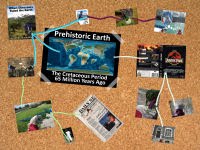


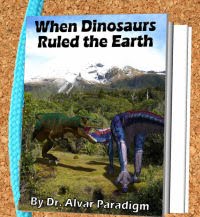


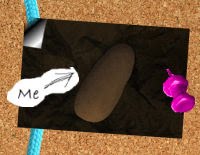





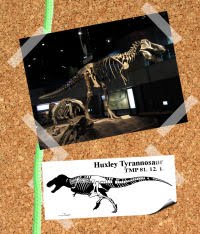








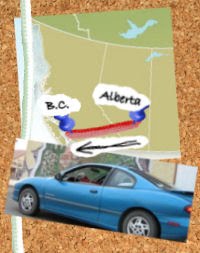










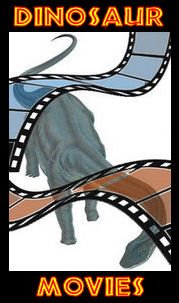






6 comments:
Wow, Traum!
These whale shots are great! Te Papa sounds like a fantastic museum. Why do you think you haven't lost any of those baskets yet?
I don't know yet...
I was going to ask you the same thing Bond!?!?! As my special talent agent aren't you supposed to know these sorts of things.
Kia ora Traumador
We're pleased you enjoyed your visit to Te Papa - just wish you'd come and said hello to the Whales Team, and we could have taken you for a spot of afternoon tea.
There's never a dull moment here so now we working on our big squid exhibit - the colossal kind. I think you'll like it, so be sure to come and visit us again here in windy Wellington later this year.
Thanks Pixel
It was one of the awesomest displays I've seen at a museum in New Zealand so far.
Too bad I had to rush through the museum. Would have been awesome to hang out with the Te Papa crew.
I can't wait to see the Squid... was keeping up with it on your blog.
Next time I'm in the capital I'll let you know.
Very interesting. I learned a lot, Traumador. You're a smart tyrannosaurid. When do you think, you'll get your growth spurt?
Well glad to have help spread some Palaeo knowledge Raptor Lewis (you don't work for my cousin do you?!?)
As for my growth spurt I have no idea, but I just recently had a check up with the world famous palaeontologist Professor Paradigm, and hopefully he'll be able to tell me something about it.
Post a Comment